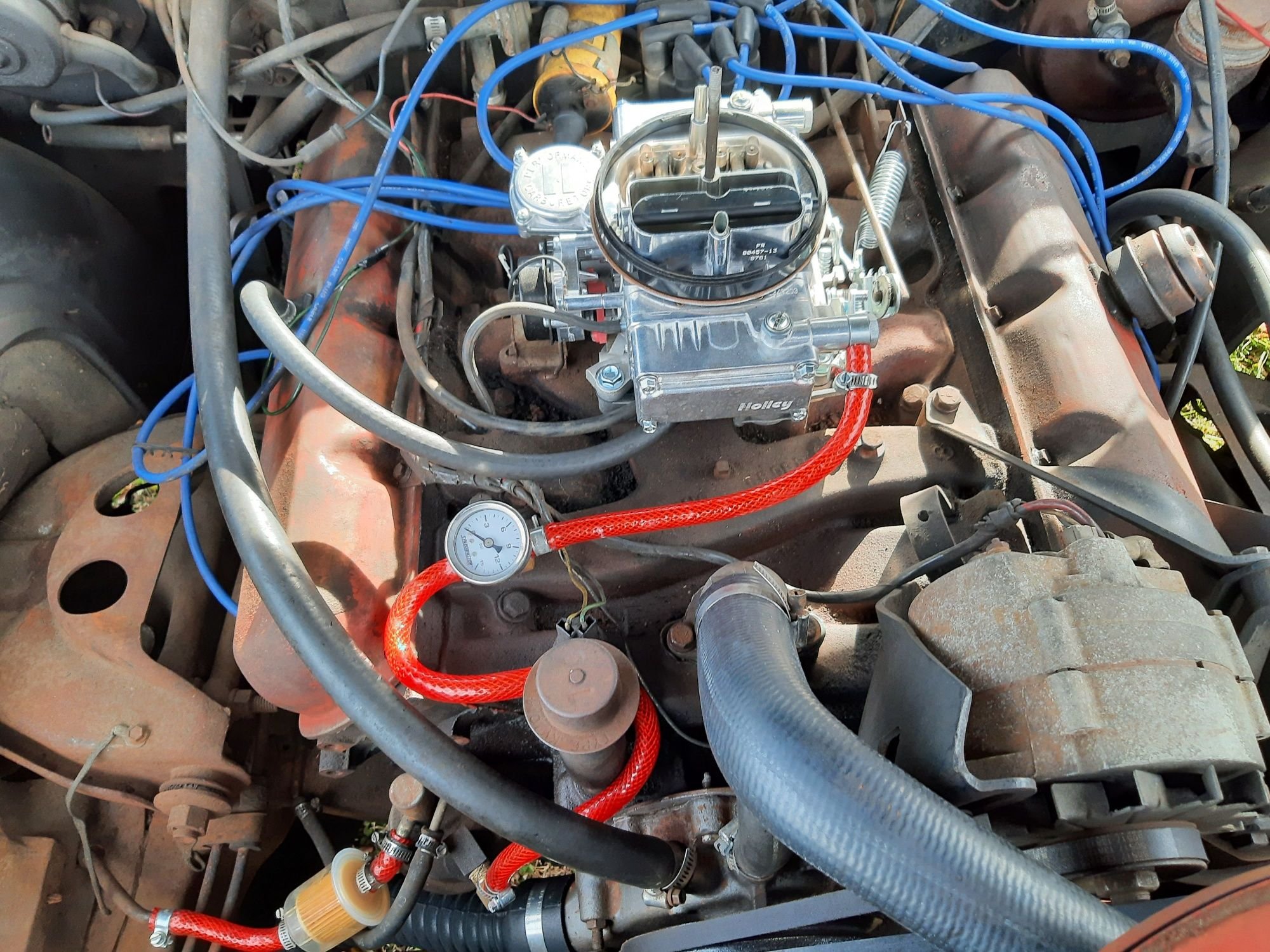66 425 Engine Complete, Running, Less Carb
#2
#8
#9
Switch pitch is a great transmission. But you need a switch to change the pitch. 65-67 fullsize came with the switch in the throttle linkage. I think some midsize with ST300 also had a switch pitch converter Some people have discussed an electronic switch (I think in Facebook Oldmobile Performance Engines group https://www.facebook.com/groups/1451...974590&__cft__[0]=AZUjAKuZ2uG1EK5terdIwufl0MTw3AogHs3HO-kkllocPNm8X8PlzT6y0Foif1F0IJtVUnkl5cK8km61Tnoy_EF6 TditA_h_cjQeNlanghaNE4lKJhG5QFsadPsT0ZUeCK-pYAP5qdsqsnCj61A27Td8JlDWtlkr_vlfHJku4vchiiH9IFZz8 7l3hOOkrhZnwLA&__tn__=-UC%2CP-R), I didn't really follow the details.
Saw this great description of the switch pitch transmission (copied from someone else's post)From 1964-1967, Buick and Oldsmobile versions of this transmission used a torque converter with a variable-pitch stator called Switch-Pitch (by Buick) or Variable Vane (by Oldsmobile). The stator blades moved from high to low position by an electrical solenoid and a stator valve, controlled by a switch on the throttle linkage. At light to medium throttle, the stator blades were at 32°, providing a torque multiplication of 1.8:1 and a converter stall speed of approximately 1800 rpm. At ⅔ to full throttle, the blades switched to the 51° high position, giving torque multiplication of 2.45:1 and a stall speed of approximately 2300 rpm. The blades were also set to the high position at idle to limit creep when stopped in Drive. The variable-pitch stator was eliminated after 1967
Saw this great description of the switch pitch transmission (copied from someone else's post)From 1964-1967, Buick and Oldsmobile versions of this transmission used a torque converter with a variable-pitch stator called Switch-Pitch (by Buick) or Variable Vane (by Oldsmobile). The stator blades moved from high to low position by an electrical solenoid and a stator valve, controlled by a switch on the throttle linkage. At light to medium throttle, the stator blades were at 32°, providing a torque multiplication of 1.8:1 and a converter stall speed of approximately 1800 rpm. At ⅔ to full throttle, the blades switched to the 51° high position, giving torque multiplication of 2.45:1 and a stall speed of approximately 2300 rpm. The blades were also set to the high position at idle to limit creep when stopped in Drive. The variable-pitch stator was eliminated after 1967
#10
Switch pitch is a great transmission. But you need a switch to change the pitch. 65-67 fullsize came with the switch in the throttle linkage. I think some midsize with ST300 also had a switch pitch converter Some people have discussed an electronic switch (I think in Facebook Oldmobile Performance Engines group https://www.facebook.com/groups/1451...974590&__cft__[0]=AZUjAKuZ2uG1EK5terdIwufl0MTw3AogHs3HO-kkllocPNm8X8PlzT6y0Foif1F0IJtVUnkl5cK8km61Tnoy_EF6 TditA_h_cjQeNlanghaNE4lKJhG5QFsadPsT0ZUeCK-pYAP5qdsqsnCj61A27Td8JlDWtlkr_vlfHJku4vchiiH9IFZz8 7l3hOOkrhZnwLA&__tn__=-UC%2CP-R), I didn't really follow the details.
Saw this great description of the switch pitch transmission (copied from someone else's post)From 1964-1967, Buick and Oldsmobile versions of this transmission used a torque converter with a variable-pitch stator called Switch-Pitch (by Buick) or Variable Vane (by Oldsmobile). The stator blades moved from high to low position by an electrical solenoid and a stator valve, controlled by a switch on the throttle linkage. At light to medium throttle, the stator blades were at 32°, providing a torque multiplication of 1.8:1 and a converter stall speed of approximately 1800 rpm. At ⅔ to full throttle, the blades switched to the 51° high position, giving torque multiplication of 2.45:1 and a stall speed of approximately 2300 rpm. The blades were also set to the high position at idle to limit creep when stopped in Drive. The variable-pitch stator was eliminated after 1967
Saw this great description of the switch pitch transmission (copied from someone else's post)From 1964-1967, Buick and Oldsmobile versions of this transmission used a torque converter with a variable-pitch stator called Switch-Pitch (by Buick) or Variable Vane (by Oldsmobile). The stator blades moved from high to low position by an electrical solenoid and a stator valve, controlled by a switch on the throttle linkage. At light to medium throttle, the stator blades were at 32°, providing a torque multiplication of 1.8:1 and a converter stall speed of approximately 1800 rpm. At ⅔ to full throttle, the blades switched to the 51° high position, giving torque multiplication of 2.45:1 and a stall speed of approximately 2300 rpm. The blades were also set to the high position at idle to limit creep when stopped in Drive. The variable-pitch stator was eliminated after 1967
#15
Thread
Thread Starter
Forum
Replies
Last Post
1969w3155
Parts For Sale
0
July 5th, 2013 12:21 PM












